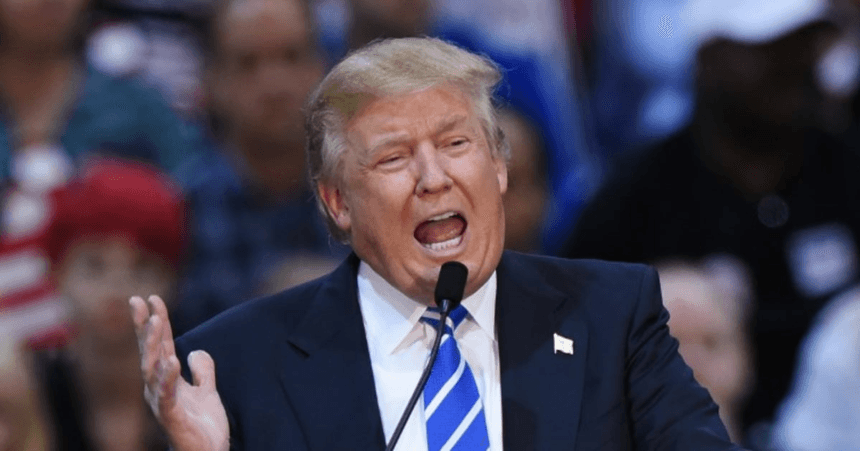Main Points In Hindi (मुख्य बातें – हिंदी में)
-
व्यापार युद्धों का प्रभाव: व्यापार युद्ध, विशेषकर अमेरिका-चीन के बीच, ने अमेरिकी अर्थव्यवस्था को नुकसान पहुंचाया है और इसका असर मुख्य रूप से उपभोक्ताओं पर पड़ा है, जिन्होंने बढ़ी हुई कीमतों का सामना किया।
-
टैरिफ और प्रतिशोध: ट्रम्प के द्वारा लगाए गए टैरिफ, जो कि चीन को लक्षित करते थे, ने यूरोपीय संघ, कनाडा, और मैक्सिको जैसे देशों के साथ व्यापार संबंधों को प्रभावित किया। प्रतिशोधात्मक टैरिफ व्यापार में कीमतों को और बढ़ा देते हैं, जिससे दोनों देशों की अर्थव्यवस्था पर नकारात्मक असर पड़ता है।
-
भारत पर प्रभाव: नए अमेरिकी प्रशासन के तहत, यदि टैरिफ में वृद्धि होती है, तो भारतीय निर्यातकों को ऑटोमोबाइल, कपड़ा, और फार्मास्यूटिकल्स जैसे क्षेत्रों में अधिक शुल्क का सामना करना पड़ सकता है। हालांकि, चीन से अमेरिका का दूरी अपनाने पर भारत को विदेशी निवेश आकर्षित करने का अवसर प्राप्त हो सकता है।
-
भारत की आर्थिक स्थिति: भारत की घरेलू मांग स्तर की अर्थव्यवस्था होने के कारण, उसे कमजोर अमेरिकी विकास से सीमित नकारात्मक प्रभावों का सामना करना पड़ सकता है, जबकि चीन की आर्थिक स्थिति का असर कमोडिटी की कीमतों पर सकारात्मक हो सकता है।
- भारत के व्यापारिक संबंध: अमेरिका के साथ व्यापार में स्पष्टता की आवश्यकता है, लेकिन अन्य देशों के साथ भारत के व्यापार में वृद्धि हो रही है। चीन और रूस के साथ भारत के व्यापार में अत्यधिक बढ़ोतरी हुई है, जिससे भारत की वैश्विक व्यापार स्थिति मजबूत हो रही है।
Main Points In English(मुख्य बातें – अंग्रेज़ी में)
Here are the main points summarized from the provided text:
-
Impact of Trade Wars on the Economy: Trade wars, such as the U.S.-China trade conflict initiated by Trump in 2018, did not achieve their intended goals of benefiting domestic consumers. Instead, they resulted in increased prices for consumers and did significant damage to the U.S. economy without resolving underlying economic concerns.
-
Consequences of Tariff Increases: High tariffs make imported goods more expensive, which adversely affects consumers. Additionally, retaliatory tariffs by other countries can neutralize the intended benefits of protective tariffs, leading to increased prices in both countries involved.
-
Shift in Global Trade Philosophy: While countries have historically leaned towards free trade to reduce costs and increase choices for consumers, the rise of protectionist policies has led many to view tariff increases as a viable way to protect domestic industries and reduce trade deficits.
-
Potential Effects on India: The new U.S. administration may intensify trade tensions with India. Proposed increases in tariffs on major sectors could adversely affect Indian exports, particularly in pharmaceuticals and textiles, while also impacting domestic industries protected by high tariffs.
- Opportunities for India Amidst Trade Tensions: If the U.S. focuses on decoupling from China, it may provide India with opportunities to attract foreign investment as a reliable alternative in global supply chains. Reports suggest that despite potential trade tensions, India may benefit from a shift of supply chains away from China, potentially leading to economic growth.


Complete News In Hindi(पूरी खबर – हिंदी में)
किसी को यह निर्धारित करने के लिए इतनी दूर तक देखने की भी आवश्यकता नहीं है कि व्यापार युद्धों से वास्तव में किसे लाभ होता है। 2018 में, ट्रम्प ने स्टील और एल्यूमीनियम से लेकर सौर पैनल और वॉशिंग मशीन तक हर चीज़ पर कई टैरिफ लगाए। हालाँकि चीन उनका प्राथमिक लक्ष्य था, इन कर्तव्यों ने यूरोपीय संघ, कनाडा और मैक्सिको के सामानों को प्रभावित किया, जिन्होंने जवाबी कार्रवाई करते हुए अमेरिकी कृषि वस्तुओं और अन्य उत्पादों पर कठोर शुल्क लगाया।
इन बढ़ोतरी को केवल मूल्य वृद्धि के माध्यम से अमेरिकी उपभोक्ताओं तक पहुंचाया गया, जो कि व्यापार युद्धों के उद्देश्य से बिल्कुल विपरीत है। 2020 ब्रुकिंग्स अध्ययन के अनुसार, अमेरिका-चीन व्यापार युद्ध ने अंतर्निहित आर्थिक चिंताओं को हल किए बिना अमेरिकी अर्थव्यवस्था को काफी नुकसान पहुंचाया था, जिन्हें व्यापार युद्धों से हल किया जाना था।
हाल तक, देशों ने मुक्त व्यापार के सिद्धांत को अपनाया क्योंकि यह वस्तुओं की लागत को कम करते हुए उपभोक्ताओं को भरपूर विकल्प प्रदान करता था। लेकिन जैसे-जैसे देश संरक्षणवादी नीतियों की लहर से जूझ रहे हैं, टैरिफ वृद्धि को घरेलू व्यवसायों की रक्षा करने, रोजगार पैदा करने और व्यापार घाटे को दूर करने के आदर्श तरीके के रूप में देखा जाता है।
ऊंचे टैरिफ से सामान महंगा हो जाता है, जिससे उपभोक्ता प्रभावित होते हैं। महत्वपूर्ण बात यह है कि यह नाममात्र विनिमय दर को इस तरह से समायोजित करता है कि आयात के दिए गए मूल्य को निर्यात के कम मूल्य से वित्तपोषित किया जा सके। व्यापार अर्थशास्त्री इस प्रभाव को व्यापार की शर्तें बाह्यता कहते हैं। हालाँकि, यह तभी मान्य है जब कोई देश अपने व्यापारिक भागीदार के प्रतिशोध के बिना टैरिफ बढ़ा सकता है। अर्थशास्त्री वोल्फगैंग लेचथेलर और मारिया मिलेवा के अनुसार, प्रतिशोधात्मक टैरिफ व्यापार की शर्तों के प्रभाव को बेअसर कर देते हैं, जिसके परिणामस्वरूप दोनों देशों के लिए आयात की कीमतें बढ़ जाती हैं।
आयात शुल्क बढ़ाने से न केवल आयात महंगा हो जाता है, बल्कि आर्थिक पुनर्गठन भी होता है, क्योंकि इससे विशेषज्ञता के लिए प्रोत्साहन कम हो जाता है। अंत में, व्यापार युद्ध उपभोक्ताओं और व्यवसायों दोनों के लिए हानिकारक हो सकता है, द्विपक्षीय संबंधों को खराब कर सकता है और दो देशों के बीच व्यापारिक संबंधों पर हानिकारक प्रभाव डाल सकता है।
जहां तक भारत का सवाल है, ट्रम्प के नेतृत्व में आने वाला अमेरिकी प्रशासन व्यापार घर्षण को तेज करने का विकल्प चुन सकता है और यदि प्रस्तावित 10% -20% टैरिफ बढ़ोतरी वास्तव में लागू की जाती है, तो यह हम पर प्रतिकूल प्रभाव डालेगा, संभावित रूप से व्यापार संतुलन को बदल देगा, जो भारत के पक्ष में रहेगा। FY24 में $35.3 बिलियन के अधिशेष के साथ।
ट्रम्प अक्सर हार्ले-डेविडसन मोटरसाइकिलों पर 100% शुल्क की ओर इशारा करते हुए भारत के टैरिफ के खिलाफ तर्क देते थे, जिसके परिणामस्वरूप कम कर दिया गया था। भारत को ‘टैरिफ किंग’ और आयात शुल्कों का ‘दुरुपयोग करने वाला’ करार देते हुए, उन्होंने न्यायसंगत व्यापार प्रथाओं का आह्वान किया और इसलिए वास्तविक आशंकाएं हैं कि नए अमेरिकी प्रशासन के आने पर भारतीय निर्यातकों को ऑटोमोबाइल, कपड़ा और फार्मास्यूटिकल्स जैसे सामानों के लिए उच्च सीमा शुल्क का सामना करना पड़ सकता है। ‘अमेरिका फर्स्ट’ की रणनीति अपनाता है। यह न केवल उन क्षेत्रों को प्रभावित कर सकता है जहां भारत ने कृषि और विनिर्माण जैसे घरेलू उद्योगों की रक्षा के लिए उच्च टैरिफ बनाए रखा है, बल्कि फार्मास्यूटिकल्स जैसे क्षेत्र भी प्रभावित हो सकते हैं, जहां यह दुनिया का अग्रणी जेनेरिक दवा उत्पादक है, जो टैरिफ के अलावा नई नियामक बाधाओं से प्रभावित हो सकता है। इसी तरह, अगर ट्रम्प इन धातुओं पर टैरिफ बहाल करते हैं, जैसा कि उन्होंने अपने पिछले कार्यकाल के दौरान किया था, तो स्टील और एल्यूमीनियम जैसे अन्य उद्योगों को भी नुकसान हो सकता है।
इसमें कहा गया है, अगर ट्रम्प चीन से अलग होने पर जोर देते हैं, तो इससे मध्यम अवधि में भारत को फायदा हो सकता है, संभावित रूप से देश में अधिक विदेशी निवेश आकर्षित हो सकता है। भारत के पास चीन से दूर आपूर्ति श्रृंखलाओं में विविधता लाने की इच्छुक विदेशी कंपनियों के लिए खुद को एक विश्वसनीय विकल्प के रूप में स्थापित करने का एक अनूठा अवसर होगा, खासकर महत्वपूर्ण और उभरती प्रौद्योगिकियों वाले क्षेत्रों में।
नोमुरा की सितंबर की एक रिपोर्ट में सुझाव दिया गया है कि व्यापार और आप्रवासन पर संभावित तनाव के बावजूद, भारत को ट्रम्प की नीतियों से लाभ हो सकता है जो आपूर्ति श्रृंखला को चीन से दूर ले जाती हैं। “भारत काफी हद तक घरेलू मांग-संचालित अर्थव्यवस्था है, इसलिए कमजोर अमेरिकी विकास से नकारात्मक विकास का फैलाव सीमित होना चाहिए। इसके विपरीत, चीन के विकास पर असर के कारण कमोडिटी की कम कीमतें और जीवाश्म ईंधन की ओर अधिक दबाव के कारण तेल की कम कीमतें, भारत के लिए एक वृहद टेलविंड हो सकती हैं, ”यह नोट किया गया।
जबकि अमेरिका के साथ व्यापार को स्पष्टता की आवश्यकता है, अन्यत्र यह फल-फूल रहा है। उदाहरण के लिए, सीमा विवादों के बावजूद, चीन 118.4 बिलियन डॉलर के साथ भारत के सबसे बड़े व्यापारिक भागीदार के रूप में उभरा है, जिसने अमेरिका को पीछे छोड़ दिया है, जिसका व्यापार 118.3 बिलियन डॉलर था। इसी तरह, रूस के साथ भारत के व्यापार में पिछले पांच वर्षों में 5 गुना वृद्धि देखी गई। दोनों देशों के बीच द्विपक्षीय व्यापार फिलहाल 60 अरब डॉलर का है और सरकार चाहती है कि 2030 तक यह 100 अरब डॉलर तक पहुंचे।
Complete News In English(पूरी खबर – अंग्रेज़ी में)
Certainly! Here’s a simplified version of the text in English:
—
It’s not hard to see who really benefits from trade wars. In 2018, President Trump imposed tariffs on various goods, from steel and aluminum to solar panels and washing machines. While China was the main target, these tariffs also affected products from the European Union, Canada, and Mexico, which responded by imposing their own tariffs on American agricultural goods and other products.


These tariff hikes ultimately led to increased prices for American consumers, which goes against the purpose of trade wars. According to a 2020 Brookings study, the U.S.-China trade war caused significant harm to the American economy without addressing the underlying economic issues it was supposed to solve.
Until recently, many countries embraced free trade, believing it reduced costs for goods and offered consumers more options. However, as countries face a wave of protectionist policies, raised tariffs are now seen as a way to protect domestic businesses, create jobs, and reduce trade deficits.
Higher tariffs make imported goods more expensive, directly impacting consumers. They also adjust the nominal exchange rate in such a way that the higher prices of imports are supported by lower export values. Trade economists call this the terms of trade effect, but it only holds if a country can increase tariffs without facing retaliation from its trade partners. According to economists Wolfgang Lechthaler and Maria Mileva, retaliatory tariffs can neutralize this effect, resulting in increased import prices for both countries involved.
Increasing import tariffs not only makes imports costlier but also disrupts the economy by reducing incentives for specialization. Ultimately, trade wars can harm both consumers and businesses, damage bilateral relations, and have negative effects on trading relationships between countries.
Regarding India, the U.S. administration under Trump could choose to escalate trade tensions further. Proposed tariff increases of 10%-20% could adversely affect India, potentially changing the trade balance, which currently shows a surplus of $35.3 billion for FY24.
Trump often cited a 100% tariff on Harley-Davidson motorcycles to criticize India’s tariffs, labeling it as a ‘tariff king’ and accusing it of abusing import duties. As he called for fair trade practices, there are real concerns that new U.S. policies could lead to higher tariffs on Indian exports like automobiles, textiles, and pharmaceuticals following the ‘America First’ strategy. This could impact sectors where India maintains high tariffs to protect domestic industries and also affect pharmaceuticals, where India is the world’s leading generic drug producer, facing new regulatory hurdles alongside tariffs. If Trump reinstates tariffs on metals, as he did during his previous term, other industries like steel and aluminum could also suffer.
On the other hand, if Trump emphasizes reducing ties with China, this could provide a medium-term advantage for India by attracting more foreign investment. India has a unique opportunity to position itself as a reliable alternative for foreign companies wanting to diversify supply chains away from China, especially in key and emerging technologies.
A report from Nomura in September suggested that despite potential trade and immigration tensions, India could benefit from Trump’s policies that shift supply chains away from China. India’s economy is largely driven by domestic demand, so the negative impact of weaker U.S. growth should be limited. In contrast, lower commodity prices and reduced oil prices due to the impact on China’s growth could provide India with favorable conditions.
While trade relations with the U.S. need clarity, trade with other countries is thriving. For instance, despite border disputes, China has become India’s largest trading partner with $118.4 billion in trade, surpassing the U.S. at $118.3 billion. Similarly, trade with Russia has grown fivefold over the past five years, with current bilateral trade at $60 billion, and the government aims to increase it to $100 billion by 2030.
—
This version retains the original ideas while using simpler language for better understanding.
Source link








